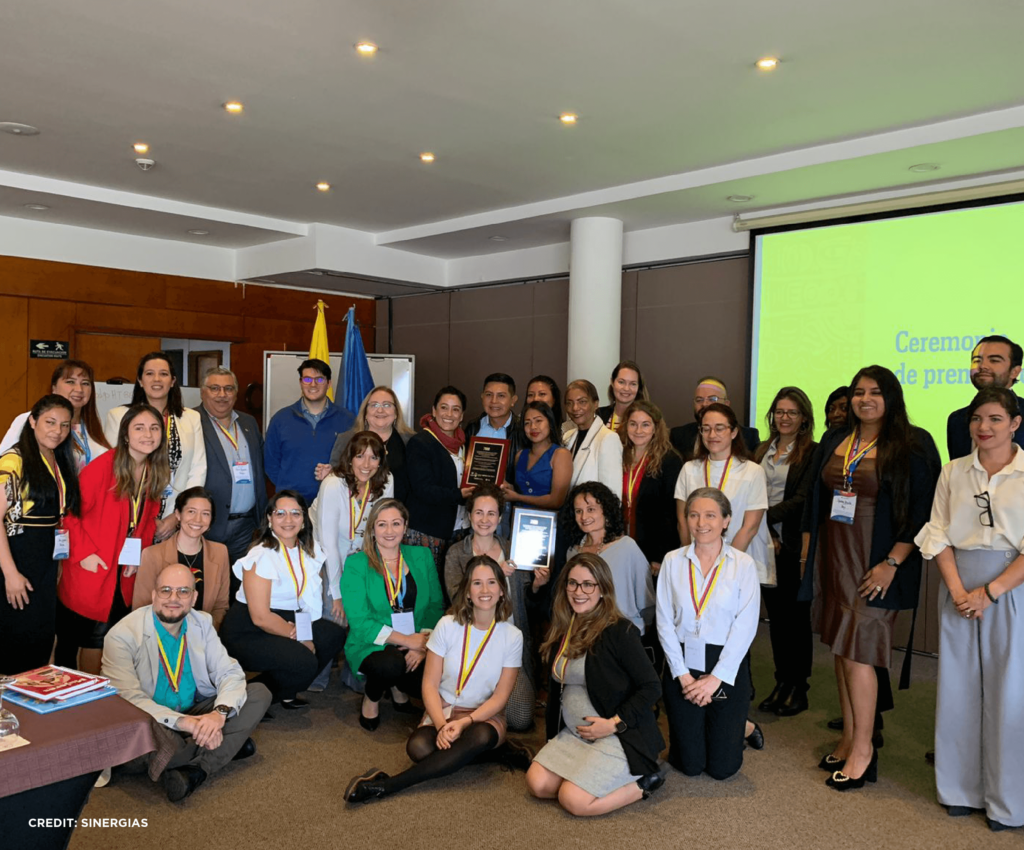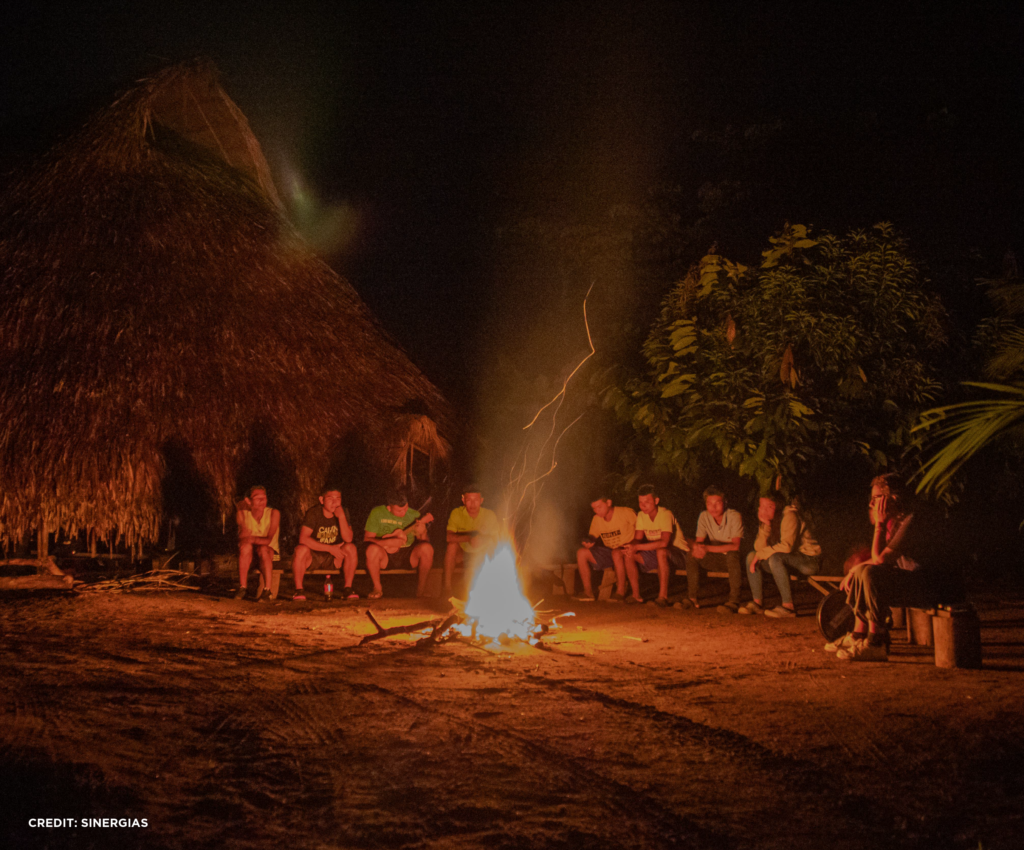The onset of the COVID-19 pandemic resulted in confusion and anxiety due to the many unknown risks presented by the virus. However, unlike those of us who could access the latest stream of information instantaneously on our mobile phones, Amazonian communities did not have the same benefits. In Colombia, the Amazon area covers an area of 483 000km2, 35% of the total country landmass. Of the 1.9 million Colombian indigenous people, 150,000 are dispersed throughout the Amazon. Due to this vast geographic area, healthcare facilities are few and far between, and mobile/internet connectivity is acutely limited, thus resulting in these communities having the worst health indicators in the country. Indigenous and rural communities living in the Colombian Amazon were among the worst affected by the COVID-19 pandemic due to a lack of health information and limited access to personal protective gear and health services.
“We are totally forgotten, from the high authorities such as the president, the governor’s office, even the mayor’s office or councilmen who do not fight to have a first quality hospital, so this hospital is a disaster“
— Obisimar, representative of the Tikuna Ethnic Group
In 2011, Pablo Montoya established a non-profit organization in Colombia. He named the organization ‘Sinergias’, with a vision to build synergies between communities and organizations in the Amazon, for health improvement. Pablo’s passion for this people group came from living in the Amazon region as part of his post-medical training practicum. During this time, he developed a profound appreciation of wisdom inherent in indigenous cultures and a deep understanding of the challenges faced by these communities. Thus, in 2020, when the COVID-19 pandemic started, Pablo and his team at Sinergias immediately contacted local indigenous organizations asking how he and his team could support the pandemic response in the Amazon. Against a long national history of limited human rights and a desire for greater self-determination, the communities expressed how they felt forgotten by the world and was left without the necessary health services to provide care during the pandemic. Although Sinergias could not support care delivery, it was agreed with the communities that access to relevant, timely, and culturally sensitive health information would be of great value to help keep them safe during the pandemic.
Pablo and the team at Sinergias immediately got to work, writing grants to support with the communities with their priorities. To help increase access to local knowledge, two strategies were implemented. First, Sinergias partnered with the National University of Colombia to support the training of indigenous community health workers on COVID-19. Second, a set of 12 audio teachings (radio programs) were created that contained all the relevant information on COVID-19. The uniqueness of these audio teachings was not merely in being scientifically sound but also a great effort was made to ensure that the information was communicated in local indigenous languages and rooted in the cultural knowledge systems of indigenous communities. The limitation that had to be overcome, once these audio recordings were produced, was the lack of dissemination channels.The Sinergias team used a multi-prong dissemination strategy. The recordings were disseminated to +/- 250 communities via local indigenous organizations working in each of the four regions, via 10 local radio stations, tape recorders with microphones, and social communication channels such as WhatsApp and Youtube. These recordings became known as “El Canto del Tucán” – the song of the Tucán, a native Amazonian bird whose song can be heard across the jungle.
“This is the first time that a program of this type has been carried out in Leticia. There are no cultural radio stations here, and we received information about the virus, talking about safety measures in the Transmilenio… For these people, there is no such thing. The program helped people understand the importance of what was happening”
— Mauricio Quintero, Radio Production Center of the National University
Three years after the pandemic, the successful uptake of El Canto del Tucán by communities has ensured its sustainability and it has led to its evolution to focus on other health topics such as mental health, traditional medicine practices, community leadership, and governance for health, family and women wellbeing, and nutrition. In 2021, the project was further modified to a process of community journalism as Sinergias started investing in building the local communication capacity of indigenous communities, specifically youth and women. They have created a face-to-face health journalist training program to equip youth and women with the skills to produce their own communication materials such as audio recordings, videos, and written materials. There have been several outcomes from this training. First, this journalistic process has been valuable in capturing ancestral indigenous health knowledge, memories and practices to be preserved for future generations. Second, it has facilitated community discussions around taboo topics such as gender-based violence, disability, and elderly neglect. Third, in the setting of high unemployment and suicide rates, this training program has further encouraged and motivated participating youth and created new social networks and job opportunities for them.Fourth, a collective of 15 indigenous members representing different indigenous traditional authorities and ethnic groups have created a collective focused on creating more investigative indigenous journalistic content beyond health.
“Sinergias [with the Canto del Tucán] has done many good things to help us, so that we do not forget [traditional practices] and with that, we are taking our children with us. If we get our act together, we are going to manage our own health, with our wise men…”
— Rubiela, Captain of the Mituseño Urania Community (quote provided by Sinergias)
The work of Sinergias through the El Canto del Tucán project is a positive example of a collective intercultural process that has led to the generation and dissemination of health information that effectively bridges the divide between scientific health and ancestral health knowledge and also enhances local indigenous capacities towards self-determination.
This project is made possible through the creative efforts of:
Pablo Montoya, Ana Judith Blanco, Carlos Franky, Dany Mahecha, Camila Rodríguez, María José Montoya, Emilia Cárdenas Marta Dallos, Eliana Parra; Johan Valbuena; Lina Archila; Valentina Riveros, Adelia Maria Prada Santos.
In collaboration with: Sinergias Alianzas Estratégicas para la salud y el Desarrollo Social; Universidad Nacional de Colombia; Fundación Interdisciplinaria Nueva Ciudad; Cocinando Territorio; Organización Zonal Indígena del Putumayo; Emisora Fantástica Estéreo; Red Guacamaya; Radio Waira.


This innovation profile was written by Lindi van Niekerk, PAHO consultant, based on documents supplied by Sinergias and an interview conducted by Charlotte Scott and Kathleen Agudelo, from the SIHI LAC Hub. Website design completed by Amy Clarke and Claudi van Niekerk from Chembe Collaborative.

© 2025, TDR, the Special Programme for Research and Training in Tropical Diseases